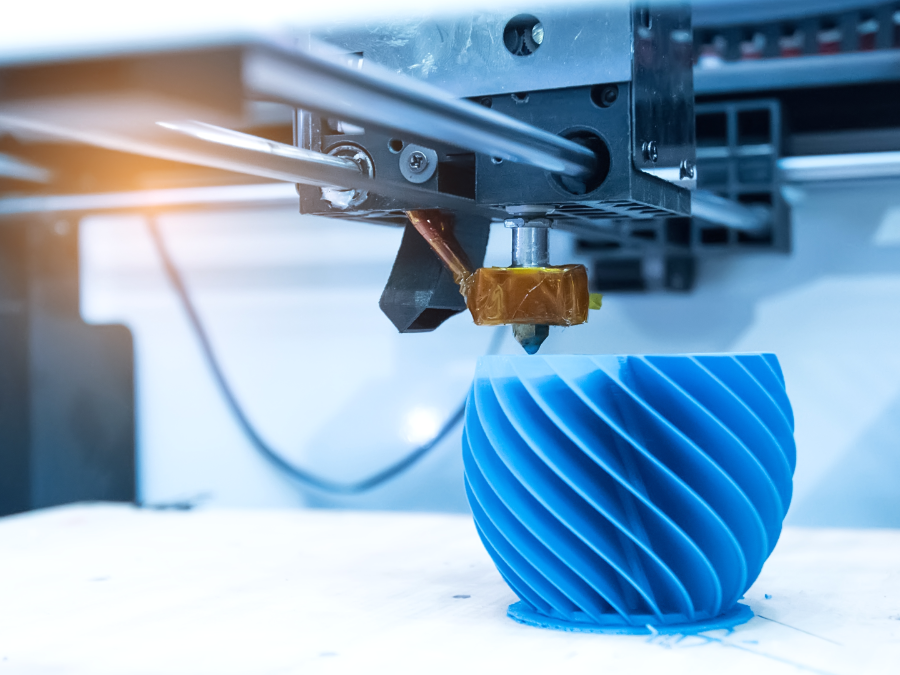The Evolution of Additive Manufacturing Materials: From Plastics to Metals
In the world of manufacturing, additive manufacturing (AM) has emerged as a transformative technology, revolutionizing the way we conceptualize, design, and produce objects. Initially dominated by plastics, additive manufacturing has experienced a significant evolution in materials, with metals emerging as a prominent contender. This shift marks a pivotal moment in the history of manufacturing, unlocking new possibilities and reshaping industries across the globe.
Plastics in Additive Manufacturing
Plastics have long been a cornerstone of additive manufacturing (AM) due to their versatility, affordability, and ease of use. From the inception of 3D printing technology, plastics like PLA, ABS, and nylon have been widely utilized for prototyping, model-making, and low-volume production.
Plastics offer several advantages in AM, including their ability to be melted and extruded at relatively low temperatures, making them compatible with a wide range of desktop and industrial 3D printers. Moreover, plastics can be easily colored, blended, or modified with additives to achieve specific properties, such as flexibility, transparency, or strength.
However, plastics also have limitations in AM. They generally exhibit lower mechanical strength, thermal stability, and chemical resistance compared to metals, limiting their suitability for certain applications, particularly those requiring high-performance or durable components. Additionally, concerns about environmental sustainability and plastic waste have prompted efforts to develop more eco-friendly alternatives and recycling solutions within the additive manufacturing industry.
Despite these challenges, plastics remain an integral part of additive manufacturing, serving as a valuable entry point for experimentation, innovation, and rapid prototyping in various fields, including product design, education, and consumer goods manufacturing.
Transition to Metals in Additive Manufacturing
The quest for stronger, more durable materials led to the gradual integration of metals into additive manufacturing processes. Metals offer superior mechanical properties, thermal stability, and corrosion resistance compared to plastics, making them ideal for demanding applications in aerospace, automotive, healthcare, and beyond.
However, transitioning from plastics to metals in additive manufacturing posed significant challenges. Metals have higher melting points, greater thermal conductivity, and distinct material properties that require specialized equipment and processes. Overcoming these challenges required innovation and ingenuity, leading to the development of new additive manufacturing technologies tailored to metal materials.
Advancements in Metal Additive Manufacturing
Advancements in metal additive manufacturing (AM) have revolutionized the way complex metal parts are produced. Over the past decade, significant progress has been made in several key areas, driving the widespread adoption of metal AM across industries.
Firstly, improvements in machine hardware and software have led to enhanced precision and reliability in metal AM processes. This includes developments in laser and electron beam technologies, as well as the optimization of build parameters for better part quality.
Secondly, advancements in materials science have expanded the range of metals that can be successfully printed using AM techniques. High-performance alloys, such as titanium, stainless steel, and nickel-based superalloys, are now routinely used in metal AM applications, enabling the production of parts with superior mechanical properties and performance.
Additionally, innovations in post-processing techniques, such as heat treatment and surface finishing, have further improved the properties of metal AM parts, making them suitable for a wider range of applications, including aerospace, automotive, medical, and tooling industries.
Overall, these advancements have accelerated the adoption of metal AM as a viable manufacturing solution, offering unparalleled design freedom, reduced lead times, and cost-effective production of complex metal components.
Benefits of Metal Additive Manufacturing
The adoption of metal additive manufacturing offers numerous benefits over traditional manufacturing methods. Design freedom, customization, reduced material waste, and faster production cycles are among the key advantages driving the widespread adoption of metal AM.
Moreover, metal additive manufacturing enables the production of complex geometries and lightweight structures that were previously unattainable. This has profound implications for industries seeking to optimize performance, minimize weight, and enhance efficiency in their products and systems.
Future Outlook
Looking ahead, the future of additive manufacturing is undoubtedly intertwined with metals. Ongoing research efforts aim to further enhance the capabilities, efficiency, and accessibility of metal AM technologies. Integration with artificial intelligence, machine learning, and robotics promises to revolutionize the way we design, optimize, and produce metal parts and components.
As metal additive manufacturing continues to mature, its impact on industries, supply chains, and global manufacturing landscapes will become increasingly profound. From aerospace and automotive to healthcare and beyond, the evolution of additive manufacturing materials heralds a new era of innovation, sustainability, and competitiveness.
The evolution of additive manufacturing materials from plastics to metals represents a significant milestone in the history of manufacturing. While plastics laid the foundation for the additive manufacturing industry, metals have emerged as game-changers, unlocking new possibilities and reshaping industries across the globe.
As metal additive manufacturing technologies continue to advance, the boundaries of what is possible will continue to expand. From aerospace components to medical implants, the future of manufacturing is being forged one layer at a time, with metals at the forefront of innovation and progress.
In embracing the evolution of additive manufacturing materials, we embark on a journey towards a more sustainable, efficient, and versatile future of manufacturing. With metals as our building blocks, the possibilities are limitless, and the future is bright.
Source

